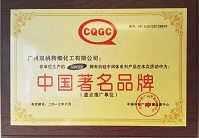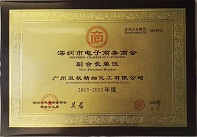
![]() E-mail: admin@gz-chemical.com
E-mail: admin@gz-chemical.com
Email us,best price and silane solutions for you!
Tel:+86 (20) 29035969

![]() E-mail: admin@gz-chemical.com
E-mail: admin@gz-chemical.com
Email us,best price and silane solutions for you!
Tel:+86 (20) 29035969


It turns out, a team of chemists has found, this can be achieved by creating particles that ha
ve both playdough and Lego traits.
These "patchy particles," described in the latest issue of the journal Nature, are 1/200th the w
idth of a human hair and can form endless architectures from a handful of basic pieces. And u
nlike their larger counterparts, these particles can self-assemble.
"Imagine that you want to build a castle, but instead of handpicking the bricks and patiently co
nnecting them one by one, you simply shake the box of pieces so that they magically connect
to one another in forming a full-featured castle," says Stefano Sacanna, an assistant professo
r in New York University Department of Chemistry and one of the creators. "These smart partic
les represent an important step forward for the realization of self-assembling new materials an
d micro-machinery."
This process—self-assembly of pre-determined micro-architectures—is similar to the way ato
mic crystals self-assemble from a specific mixture of atomic building blocks.
"In nature, extremely precise architectures, such as crystals, seamlessly grow from random so
ups of atoms," explains Sacanna. "By using similar principles, we can fabricate extremely prec
ise micro-architecture without human intervention."
"Colloidal self-assembly has the potential to revolutionize 3D printing," he adds. "This could be
achieved by not merely by further reducing the size of the printed architectures, but also by all
owing us to 'print' functional architectures. Say you want to print a model car—using colloidal s
elf- assembly, you could print a car that is a fraction of a millimetre and that could someday ac
tually run!"
For scientists, however, miniaturization currently presents a formidable challenge.
The direct manipulation of "construction bricks" that are 10 or even 100 times smaller than a
human cell is difficult. A more efficient approach is to replicate what Sacanna calls nature's
"manufacturing technology": self-assembly. This, however, requires the ability to design and
manufacture building blocks that knows what to do and where to go.
The technology developed in Sacanna's lab enables the creation of such microscopic building
blocks and impart them with an on-board instruction manual that tells them how to connect wit
h neighboring particles.
"These particles will help us to understand—and allow to mimic—the self-assembling mecha
nisms that nature uses to generate complexity and functionalities from simple building blocks,"
he says.
Sacanna and his colleague Gi-Ra Yi, a professor in the School of Chemical Engineering at Su
ngkyunkwan University (SKKU) in Suwon, South Korea, together with NYU graduate students Z
he Gong and Theodore Hueckel, created these patchy particles via a new synthetic methodol
ogy called "colloidal fusion," which is not unlike how different pieces of playdough are pieced
together.
While playdough involves squeezing together different colors of clay, colloidal fusion merges
different chemical functionalities to create multi-functional—as opposed to multi-colored—pa
rticles that also contain instructions for self-assembly. This process is achieved by deploying
software—called "Surface Evolver"—that is a simulation package similar to the software engin
eers use to design buildings.
"The software allows us to predict how an initial cluster will evolve when 'squeezed' and how th
e resulting multifunctional patchy particle will look like," notes Sacanna.
Guangzhou Double Peach Fine Chemical Co.,Ltd
Address: No 3401 Huangpu East Road, Huangpu District, Guangzhou, China
Tel:+86 (20) 29035969 Fax:+86(20)29035979
Tel/Wechat/Whatsapp:0086 13826126978 admin@gz-chemical.com